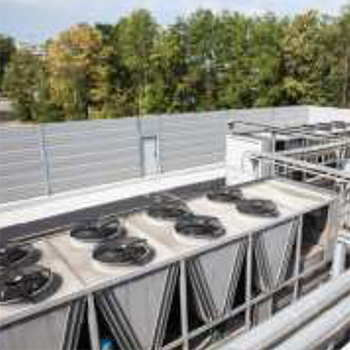Whether you own HVAC equipment or are in the business of repairing it, you will experience firsthand the many noises your equipment may make. As with any equipment malfunctions tend to occur creating a variety of noises. This blog covers some of these noises and their possible causes.
Rattling
A rattling noise could be a result of a loose belt, panel, fan, or something as simple as a few loose screws. Rattling could also be a result of a failing motor, a bent fan blade, or many other items that could be a result of having aged equipment.
Roaring/Growling
Growling noises could be a result of a failing compressor. If you hear a roaring/growling noise turn the system off and contact your HVAC service provider.
Chirping
Chirping noises may be a sign of dry bearings, the fan rubbing against the coils or blower cage, or a worn belt. Make sure the chirping is consistent before “hitting the panic button”.
Clanking
Equipment that starts making a clanking noise could be a result of loose parts, such as the blower motor fan, blades, or loose pipes rubbing together. If not addressed these can cause costly damage to your system. If you hear a clanking noise, turn your system off and contact your HVAC service provider.
Remember, it is important to have a relationship with a reliable and dependable HVAC service provider. The most important part of any equipment is keeping it maintained on a consistent basis.
PLEASE CALL HARDY SERVICES IF YOU HAVE ANY QUESTIONS ABOUT HVAC, PLUMBING & CONTROLS


 One of the most important tasks, included in a Preventive Maintenance Program, is an annual coil cleaning. During the year your HVAC system collects dirt, grime, and buildup that the coils get covered and can’t do their job. If the coils are not able to release heat, that is generated during use, the equipment can overheat which could result in a catastrophic mechanical issue that will cause your HVAC system to not function. This is a prime example that if basic tasks are performed, big expenses can be controlled.
One of the most important tasks, included in a Preventive Maintenance Program, is an annual coil cleaning. During the year your HVAC system collects dirt, grime, and buildup that the coils get covered and can’t do their job. If the coils are not able to release heat, that is generated during use, the equipment can overheat which could result in a catastrophic mechanical issue that will cause your HVAC system to not function. This is a prime example that if basic tasks are performed, big expenses can be controlled.

 To reset garbage disposal follow these simple instructions:
To reset garbage disposal follow these simple instructions: